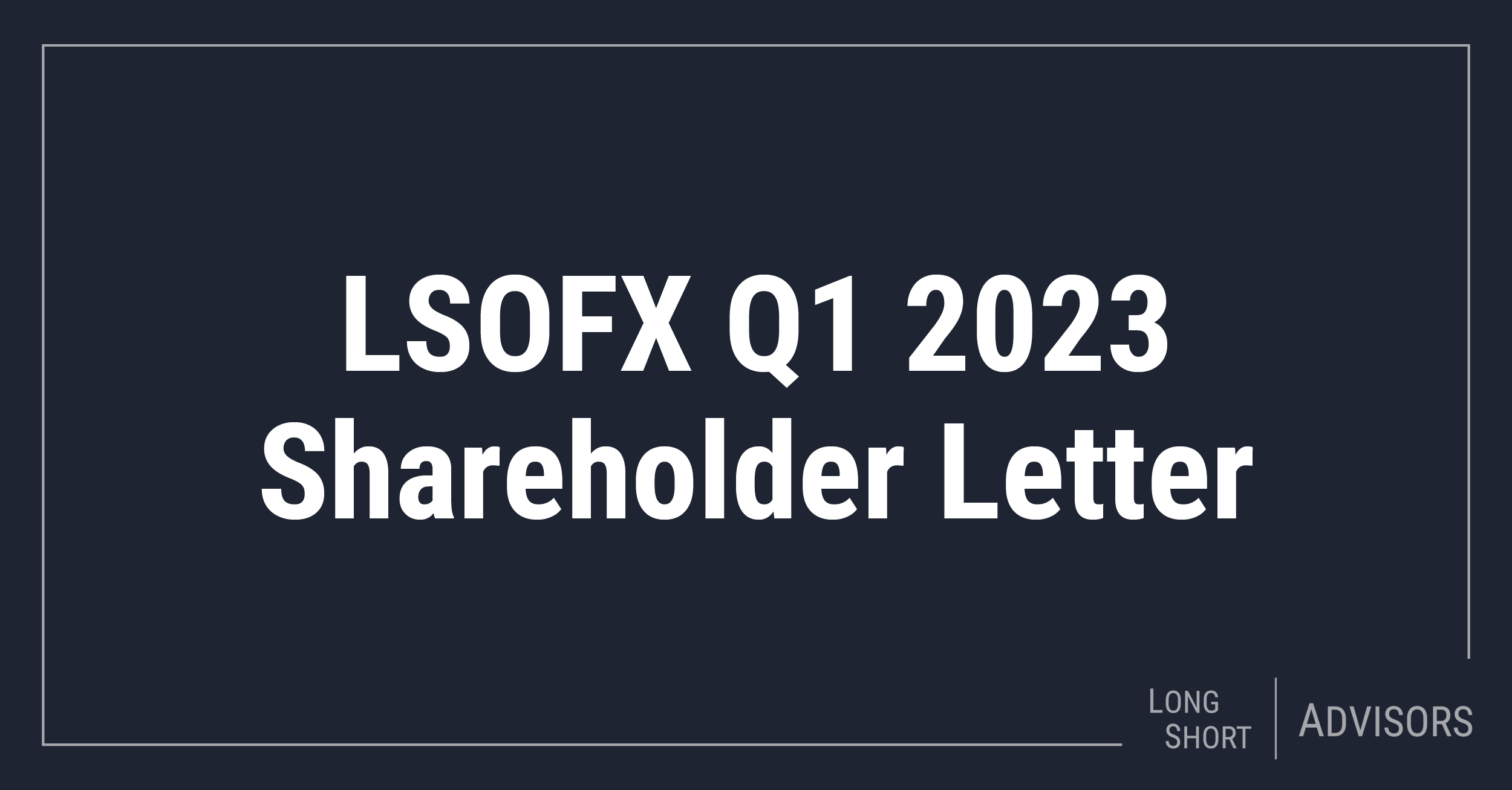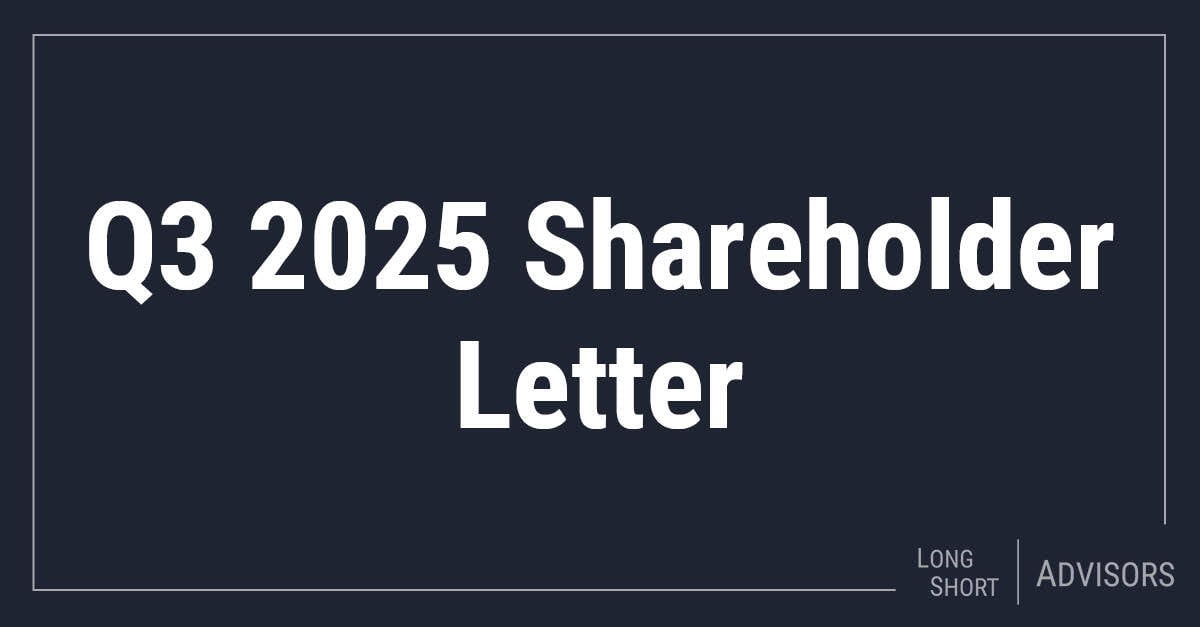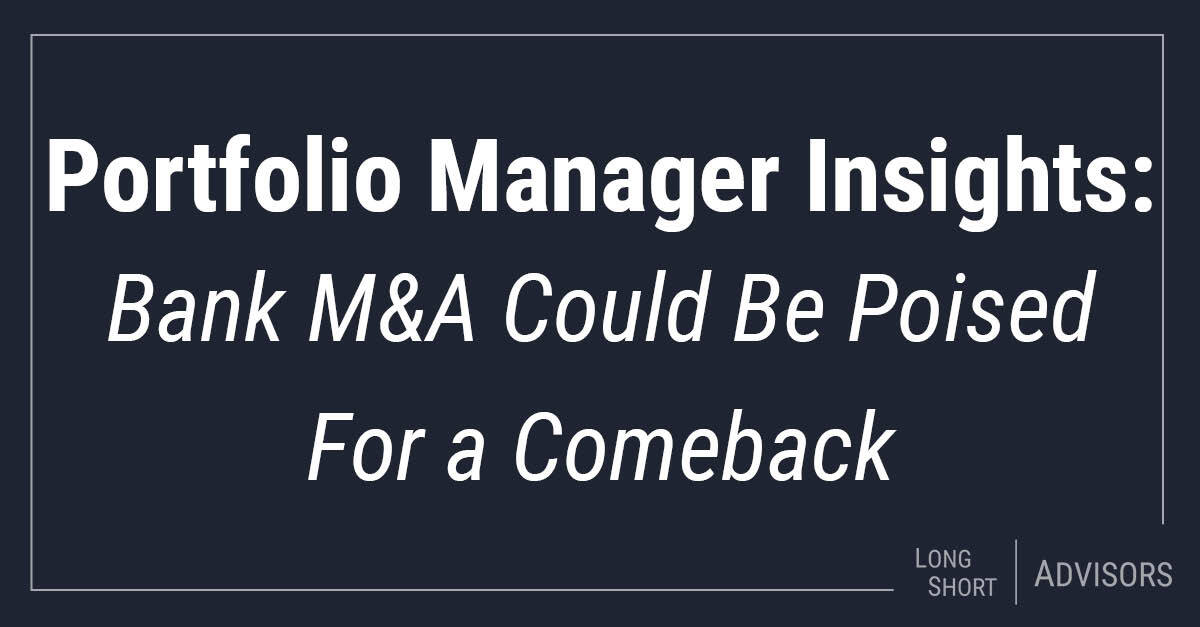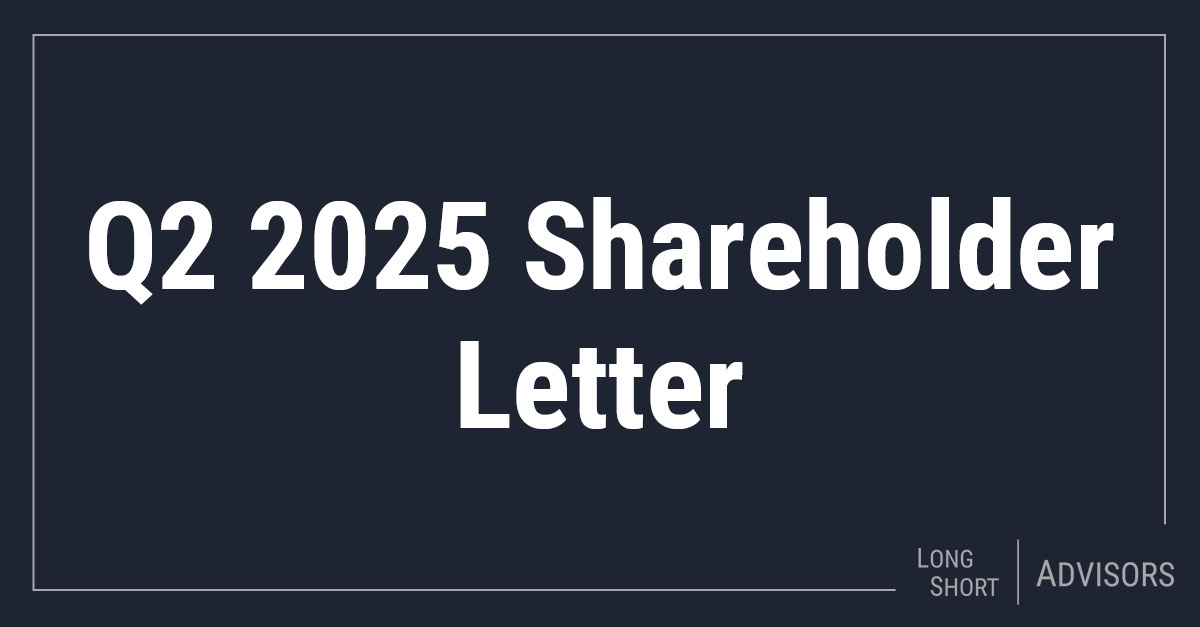Current Market Environment
The first quarter of 2023 was akin to a play with three distinct acts. However, unlike a traditional play in which the first act introduces a problem, the second act a complication, and a resolution in the final act, the problem in this saga (rapidly rising interest rates) pre-dates the beginning of the story. And in the end, the audience is left unsure of a resolution. (Hey, we didn’t say it was a good play).
The year began with steadily decreasing treasury yields throughout January as the market inferred disinflationary signals from recent economic releases. With expectations rising for an end to Fed rate hikes and continued relative strength in the economy, talk of a "soft landing" (or even "no landing") abounded. Many of the stocks and industries that had the worst 2022 performance rallied against this backdrop of declining interest rates. For example, Tesla was up over 40% in January, Meta and Amazon were both up over 20% and growth stocks significantly beat value during the month. In fact, this trend would continue through the entire quarter and the turmoil that lie ahead, as market returns were largely driven by technology and communication services stocks. Indeed, the ten top contributors to S&P 500, dominated by stocks within these sectors, contributed almost 90% of the benchmark’s total return of 7.5% in the quarter. Apple, Nvidia and Microsoft alone contributed half of the benchmark’s return during the quarter.
"Act two" came in early February with a very strong jobs report, followed later in the month with CPI, retail sales and PPI all coming in above expectations. These readings caused a sharp reversal in Treasury yields as well as hawkish commentary by members of the Fed. Expectations quickly increased for peak Fed funds rate, Treasury yields marched higher, and rekindled concerns of a "hard landing" cooled the stock market.
The first quarter's tumultuous final act came in March, with the failure of Signature Bank and Silicon Valley Bancorp, causing a sharp stock market selloff and fears of bank runs and further contagion. The demise of these banks, as alluded to earlier, was partly due to the significant rise in interest rates over the preceding year. In short, this rise in yields caused negative marks to the banks' asset portfolios, which, in turn, raised concerns over the banks’ weakened capital bases. Concerned depositors (a high percentage of which held balances above the FDIC insured amounts) started pulling money, and a run on the banks ensued. While the Federal Reserve and U.S. Treasury stepped in to guarantee depositors of these two institutions in an attempt to stem additional bank runs, still unresolved is to what extent bank regulations will become tighter following these bank failures. Given this recent turmoil, an update on our thinking and positioning is warranted.
Bank Portfolio Update
To dispel any concern, the Fund’s portfolio did not have direct exposure to any failed banks, or banks deemed as having a high risk of failing (such as First Republic or PacWest). We were fortunate to enter the first quarter with low net exposure to the sector relative to our long-term and recent history. You may recall the Fund was recently overweight banks in late 2020 through the entirety of 2021. The overweight position was the second largest since Fund inception. To summarize, we were attracted to overly conservative “Street” estimates, poor investor sentiment, rebounding M&A activity, the potential for higher interest rates and inexpensive valuations. As this thesis played out, in addition to a takeover in our favor at a substantial premium, we began significantly reducing sector exposure in early 2022, and as the year progressed.
Despite our concern regarding securities portfolios with significant unrealized losses in tandem with tightening financial conditions, the recent string of bank runs and failures undeniably took us by surprise. We applaud regulators for quickly establishing a large emergency borrowing facility for banks (the BTFP) as a liquidity backstop, and guaranteeing deposits of the failed institutions (implicitly for future failures as well, some would argue). While raising the FDIC insurance cap above $250k would be preferable, doing so would require Congressional action. As a result, banks are likely “out of the woods” for now in terms of the potential for additional overnight bank failures.
However, we are pessimistic on the sector outlook over the short-to-medium term. While rising deposit costs have plagued the industry in recent quarters, this issue will likely become worse. We have heard of multiple banks proactively reaching out to customers to assuage fears and negotiate a higher rate to retain deposits. This crisis has been in the public “limelight” causing Americans to question the safety of their deposits, and the prospect of earning a higher rate at a competing bank or via a money market fund (the latter trend benefiting the Fund’s investment in the asset manager Federated Hermes). Also, regional banks will likely bear increased regulatory scrutiny and related costs as a result of this crisis, in addition to higher FDIC assessment fees. This is especially true for banks with $100 billion to $250 billion in assets based on policy recommendations from the White House, but could also apply to banks as large as $750 billion. Many of the proposed changes can be enacted by regulators and do not require congressional approval. In addition, we expect banks to pull in the reigns on lending which will further pressure net interest income, along with the side effect of slowing the economy. While credit quality has been strong to date, our base case is a further deterioration in credit quality and higher loan loss reserves. Finally, in the near- term it is difficult to make the case for large share buyback programs or M&A activity as the sector will likely be under pressure to build capital levels and reserves. The combination of these aforementioned factors should lead to a significant reduction in forward earnings estimates in the coming quarters.
Given this outlook, we have taken a number of steps to better position the Fund’s portfolio for the environment ahead, such as exiting investments in several regional banks. Despite their investment merits, the presence of securities portfolios with significant unrealized losses and, in one case, an investment in an unsecured consumer lending business provided reason for concern in this environment. Finally, we sold the Fund’s position in the trust bank State Street given outsized share buyback activity is running its course. The stock has also been a material relative outperformer over the past year and YTD.
We used a portion of these sale proceeds to purchase additional shares of PNC Financial Services. This franchise can be viewed as being a “safe-haven” in times of stress with significant access to sources of liquidity. The bank has a history of exhibiting better than peer credit quality, in addition to capturing market share during challenging market environments. We also have high regards and respect for the management team. Additionally, we initiated a position in Bank of America at an attractive valuation in light of recent underperformance relative to peers. This banking stalwart should be a major beneficiary of deposit flows migrating to banks deemed “too big to fail.” In just a few days after the Silicon Valley Bank failure, Bank of America received over $15 billion in deposit inflows. The vast majority of their deposit base is insured, and the bank has significant cash equivalents on the balance sheet along with alternative sources of liquidity. Warren Buffet likely agrees with us, as Bank of America is Berkshire Hathaway’s second largest publicly-traded investment.
Our activity in the quarter has resulted in bank exposure being near market-neutral. That said, we are by no means “waving the white flag” on banks, and remain optimistic that the hedged book will be additive to overall fund performance given our current positioning. In due time, an argument can be made that banks will once again be an attractive buying opportunity. Ultimately, the implementation of new regulation and oversight may drive affected banks to become acquisitive in an effort to gain offsetting cost and revenue synergies. Our goal will be to identify banks for the Fund’s portfolio that are prime takeover candidates in this scenario. However, we first require clarity on potential bank regulation, the realization of negative earnings revisions, an increase in capital and reserves, and a further deterioration in credit quality and sentiment before we begin to “warm up” to the prospect of once again being overweight banks.
Further Portfolio Implications
The failures of Silicon Valley and Signature Bank will likely have significant implications not only for future banking regulations, but also for the economy as a whole. A cloud of uncertainty hangs over lending institutions, which, combined with continued risk of deposit flight, will almost certainly lead to a considerable pullback in lending. This, we fear, will have the result of further cooling an economy which is already in the midst of a Fed-hike induced slowdown. Thus, in addition to the aforementioned activity surrounding banks within the Fund’s portfolio, we took other actions with higher odds of a recession in mind. Long-time investors will recognize this “stock market distress playbook” as we have detailed in prior writings and have employed over the last 25+ years at Prospector. As in past times of stress, during the March turbulence, we decreased gross exposure – reducing overall risk during this period of heightened uncertainty. Additionally, we reduced cyclicality in the portfolio and increased exposure to less cyclical industries like consumer staples, defense, healthcare and property-casualty insurance. While we always tend to have a low leverage, high-quality bias, we looked for any opportunities to upgrade portfolio holdings.
Make no mistake - by no means were we only “playing defense.” We took every opportunity to benefit from the ensuing volatility by quickly reacting to opportunities created from uncertainty. For example, as banks sold off in March, many other non-bank financial service stocks saw significant declines in sympathy, despite having bright prospects and none of the funding concerns the banks had. We feel we were able to make purchases at attractive prices given this “baby with the bath water” reaction. This includes adding to property-casualty exposure via an increase to W.R. Berkley, who continues to benefit from one of the “hardest” pricing environments in our careers, and whose investment portfolios are benefiting from higher interest rates. We also added to holdings within electrification and automation theme (discussed in more detail within our Q4 2021 Shareholder Letter), including Sensata Technologies and Zebra Technologies, as well as new investment, Trimble. Trimble helps those in the construction, infrastructure and agricultural industries (among others) plan, design and automate projects. These companies have solid balance sheets, produce substantial cash flows, and sell for attractive valuations. We feel our recent portfolio actions, including the aforementioned examples, leave the Fund on even more solid footing and well positioned for future gains.
Outlook
Over the last 15 months, the Federal Reserve has aggressively raised interest rates in an effort to lower inflation, and equity and bond market declines have been meaningful. Markets seem likely to remain volatile until interest rate increases are behind us. The U.S. and rest of the world continue to manage the impacts of high inflation, geopolitical events, China’s rotation from a “zero-COVID” policy, and now, stresses within the banking system. In our assessment, the probability of Federal Reserve policy error and/or recession has increased, and now seems likely.
Employment remains strong. Supply / demand imbalances in the labor market suggest further wage gains, which partially mitigates the impact of inflation on the consumer. We expect continued pressure on housing prices as a result of higher interest rates and affordability concerns. However, the shortage of housing after over a decade of underinvestment following the Great Financial Crisis should prevent a disastrous decline in home prices. Lower-income consumers have been most impacted by the current inflationary environment, but consumer balance sheets remain generally healthy for the majority of Americans, and consumer credit quality remains strong at the moment. COVID-related headwinds continue to dissipate. These are reasons to believe a recession could be less significant than the previous two recessionary periods.
Following years of lower interest rates helping to drive ever-higher growth-stock valuations, we feel value investing is ripe for a period of outperformance. We continue to find opportunities to invest in quality businesses with solid balance sheets and cash flows, whose share prices have detached from our assessment of the fundamentals. The bargains inherent in the Fund’s portfolio should attract acquirers and other investors over time.
Steadfast, we remain committed to making you money while aiming to protect your wealth.
Disclosures:
You should carefully consider the investment objectives, potential risks, management fees, and charges and expenses of the Fund before investing. The Fund’s prospectus contains this and other information about the Fund, and should be read carefully before investing. You may obtain a current copy of the Fund’s prospectus by calling 1.877.336.6763.
Past performance is not a guarantee of future results.
Important Risk Information
Investment in shares of a long/short equity fund have the potential for significant risk and volatility. A short equity strategy can diminish returns in a rising market as well as having the potential for unlimited losses. These types of funds typically have a high portfolio turnover that could increase transaction costs and cause short-term capital gains to be realized. The stocks in the Fund’s portfolio may decline in value or not increase in value when the stock market in general is increasing or decreasing in value and you could lose money. The Fund may lose money due to fluctuations within the stock market which may be unrelated to individual issuers and could not have been predicted. The price of the securities which the Fund holds may change unpredictably and due to local, regional, international, or global events. In the case of a general market downturn, multiple asset classes, or the entire market, may be negatively affected for an extended and unknown amount of time.
Risk Statistic Definitions:
Standard Deviation measures the volatility of the Fund’s returns. Beta measures the Fund’s sensitivity to market movements. Sharpe Ratio uses the Fund’s standard deviation and average excess return over the risk-free rate to determine reward per unit of risk. R-squared represents the percentage of the portfolio’s movements that can be explained by general market movements. Upside/Downside Capture Ratio measures a manager’s ability to generate an excess return above the benchmark return in up markets and retain more of the excess return in down markets. Risk statistics are relative to the S&P 500. Batting Average is a statistical measure used to evaluate an investment manager’s ability to meet or beat their index. Omega is a relative measure of the likelihood of achieving a given return. Max Drawdown is the peak-to-trough decline during a specific recorded period of an investment. Gross Exposure is the sum of the absolute values of the fund’s long and short exposures. Net Exposure is the fund’s total long exposure less the fund’s total short exposure. The Expense Ratio, Gross of Any Fee Waivers or Expense Reimbursements, is 2.92%. The Expense Ratio, Net of Fee Waivers and Expense Reimbursements (contractual through 9/30/2023), is 2.89%. The Expense Cap is 1.95. The Adviser has contractually agreed to waive or limit its fees to 1.95% and to assume other expenses of the Fund until September 30, 2023, so that the ratio of total annual operating expenses (not including interest, taxes, brokerage commissions, other expenditures which are capitalized in accordance with generally accepted accounting principles, other extraordinary expenses not incurred in the ordinary course of business, dividend expenses on short sales, expenses incurred under a Rule 12b-1 plan, acquired fund fees and expenses and expenses that the Fund incurred but did not actually pay because of an expense offset arrangement) does not exceed 1.95%.
Prospector Partners, LLC assumed investment management duties on 05-28-2015 and was formally approved by shareholders on 09-17-2015.
Morningstar US Long Short Fund Category – Long-short portfolios hold sizable stakes in both long and short positions. Some funds that fall into this category are market neutral – dividing their exposure equally between long and short positions in an attempt to earn a modest return that is not tied to the market’s fortunes. Other positions that are not market neutral will shift their exposure to long and short positions depending upon their macro outlook or the opportunities they uncover through bottom-up research.
The Fund is distributed by Ultimus Fund Distributors, LLC. (Member FINRA).
16782612-UFD-04/24/2023








